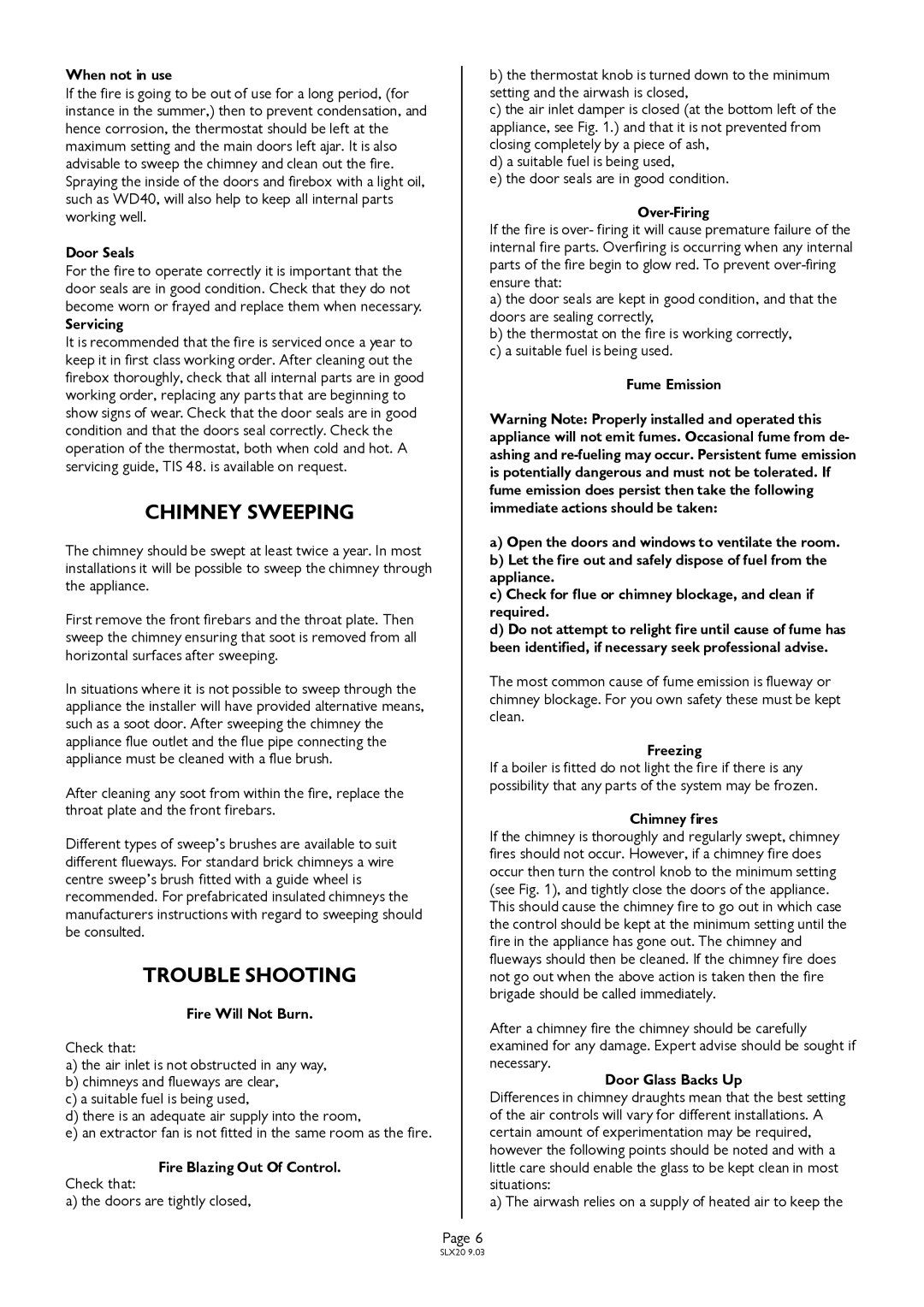SLX20 specifications
The Charnwood SLX20 is a highly acclaimed wood-burning stove that exemplifies both style and functionality, making it an ideal choice for homeowners seeking an efficient heating solution. As part of the Charnwood brand, known for its quality and craftsmanship, the SLX20 delivers exceptional performance, ensuring that it meets the needs of modern living while adhering to traditional aesthetics.One of the standout features of the SLX20 is its impressive heat output. Designed to heat spaces up to 220 square meters, this stove boasts a nominal output of 5 kW, making it perfect for both small and medium-sized rooms. The large viewing window provides an unobstructed view of the fire, enhancing the ambiance and warmth of any living space.
In terms of efficiency, the SLX20 excels with an efficiency rating of over 80%. This means that a majority of the energy generated from the wood is converted into usable heat, resulting in lower wood consumption and reduced emissions. This is particularly important in today’s environmentally conscious world where sustainability is a priority.
The SLX20 incorporates advanced technologies such as the Cleanburn system, which maximizes combustion efficiency. This system ensures that the wood burns more completely, producing less smoke and particulate matter. Additionally, the Airwash system keeps the glass clear, improving visibility of the flames while reducing the need for frequent cleaning.
Versatility is another hallmark of the Charnwood SLX20. Available in a range of colors and finishes, including classic black, blue, and green, this stove can seamlessly integrate into various interior design styles. Furthermore, it offers the option of a pedestal or traditional base, allowing for customization to match your specific preferences.
Another notable characteristic of the SLX20 is its commitment to safety. Built with robust materials and tested to the highest standards, the stove features a double-skinned body that provides improved heat retention and enhanced safety. The integrated ash pan makes cleaning convenient and efficient, ensuring that maintenance is hassle-free.
In summary, the Charnwood SLX20 combines efficiency, style, and cutting-edge technology to deliver an outstanding wood-burning stove experience. With its powerful heat output, exceptional efficiency, and customizable design options, it stands out as an excellent choice for those looking to enrich their home with the warmth and charm of a real fire. Whether for residential use or as an elegant feature, the SLX20 represents a perfect fusion of form and function in modern home heating solutions.
